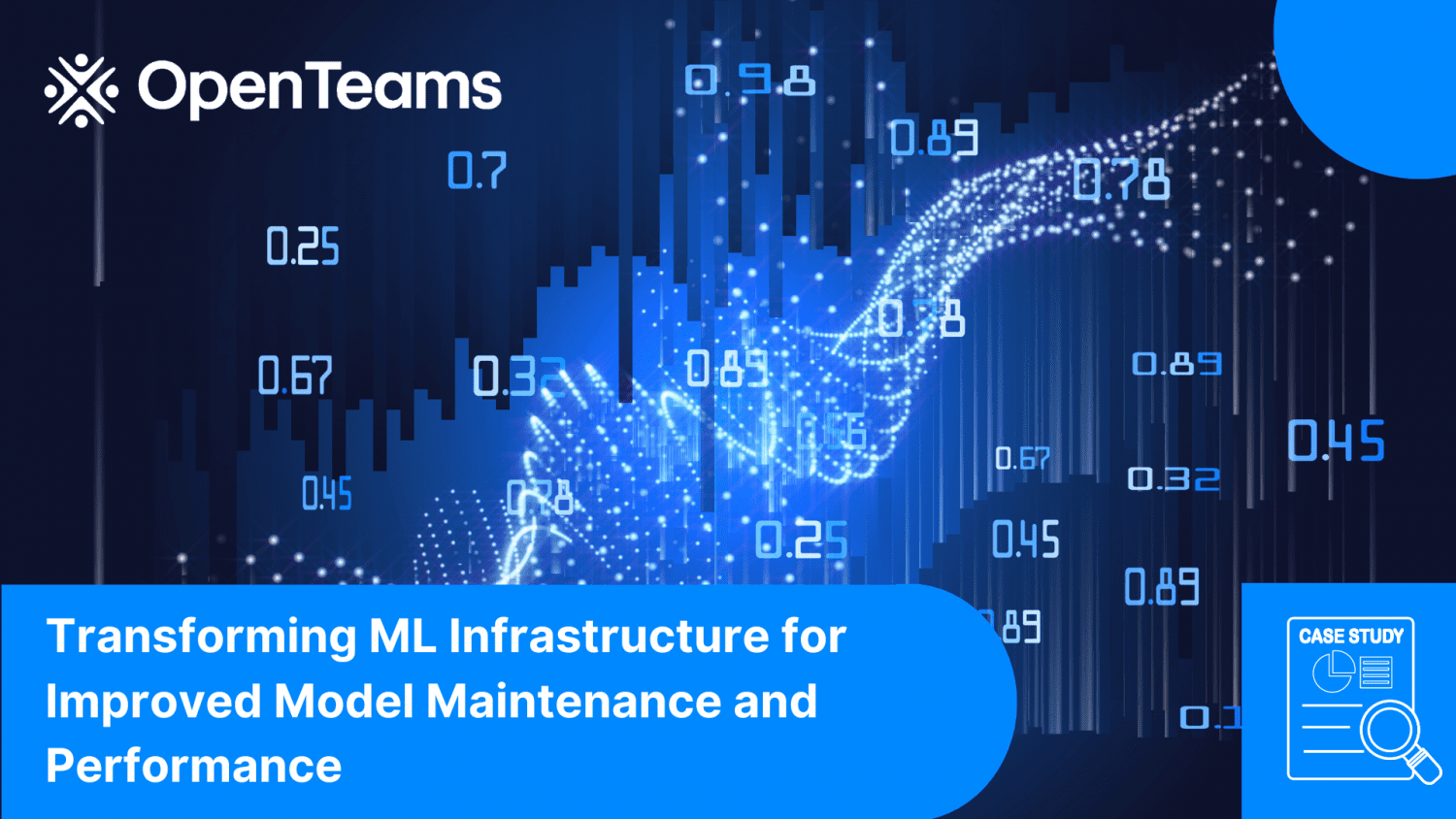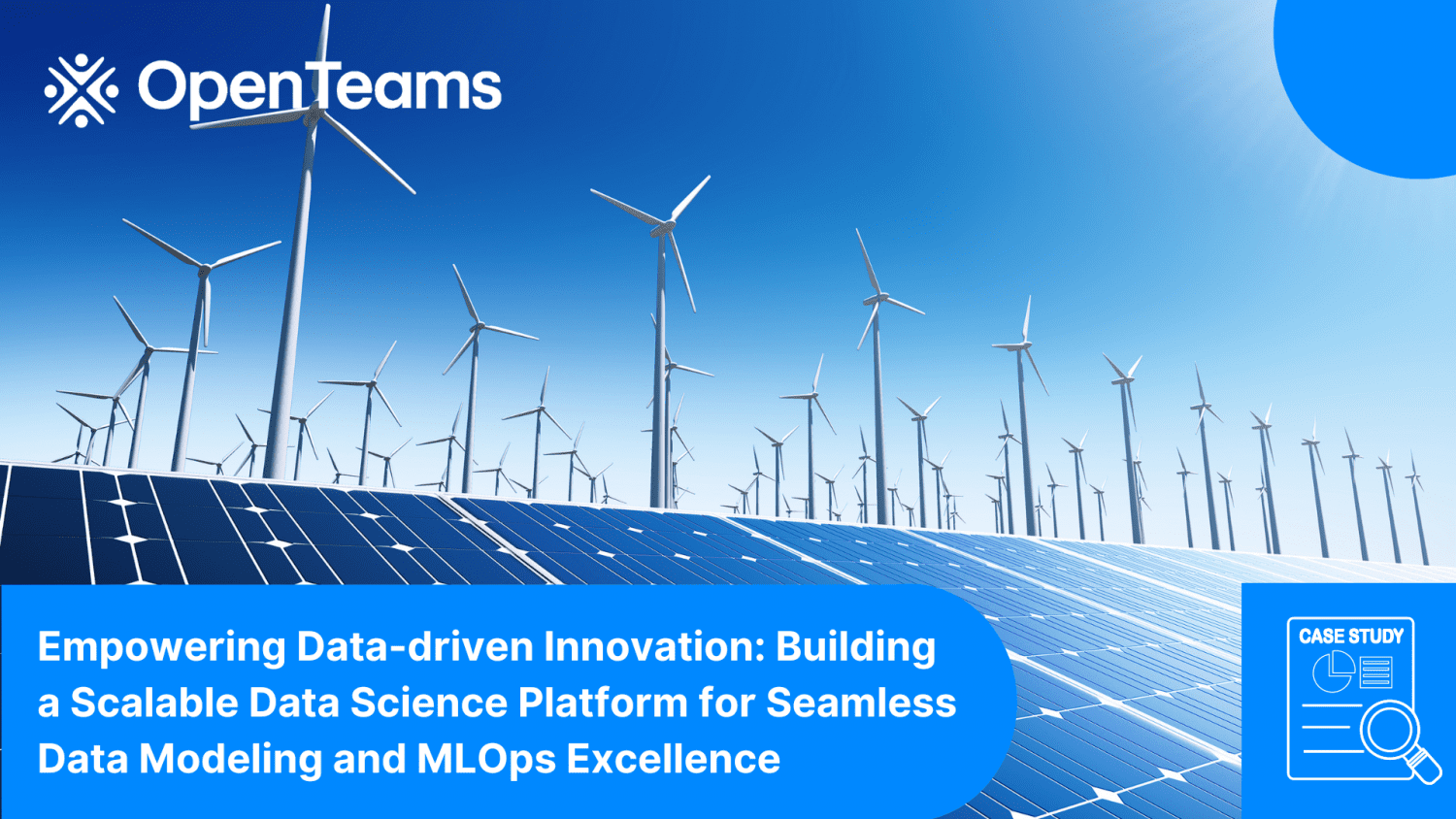
Unleashing the Power of Data: A Comprehensive Guide to the Essential Tools and Libraries for Data Science Success
Data science is an ever-evolving field that relies heavily on data tools and libraries to process, analyze, and visualize massive datasets. As the demand for data-driven insights continues to grow, data scientists need powerful tools and libraries that can handle complex computations efficiently. In this article, we will explore the top 50 data tools and libraries for data science, based on information from various sources such as Analytics Insight, Simplilearn, and DataCamp.
TensorFlow: TensorFlow is undeniably one of the top libraries for data science due to its unmatched popularity and extensive capabilities for machine learning and deep learning tasks. Developed by Google, TensorFlow boasts an expansive ecosystem that enables data scientists to build and train complex neural networks with ease. Its flexibility, scalability, and compatibility with various platforms make it a go-to choice for tackling large-scale data challenges in diverse industries.
PyTorch: As another highly favored open-source machine learning library, PyTorch has earned its spot as a top tool for data science due to its dynamic computation graphs and user-friendly interface. Data scientists appreciate PyTorch for its intuitive development process, allowing for quicker model prototyping and experimentation. Additionally, its seamless integration with Python and strong community support contribute to its popularity in the data science community.
scikit-learn: Widely recognized as a versatile machine learning library in Python, scikit-learn stands out as a top tool for its comprehensive collection of algorithms for classification, regression, clustering, and more. Its user-friendly interface, robust documentation, and seamless integration with other Python libraries make it an ideal choice for data scientists of all skill levels to perform various data analysis tasks.
NumPy: NumPy has secured its position as a top library for data science due to its fundamental role in numerical computing in Python. Data scientists benefit from its support for large multi-dimensional arrays and matrices, facilitating efficient data manipulation and computation. As a foundational library, NumPy forms the backbone of many other data science libraries and tools, solidifying its importance in the data science ecosystem.
Pandas: Pandas is an indispensable library for data manipulation and analysis in Python, earning its top status through its intuitive data structures like DataFrames that enable seamless handling of structured data. With its powerful data cleaning and preprocessing capabilities, Pandas is a go-to tool for data scientists to transform raw data into actionable insights.
R: Renowned for its statistical analysis capabilities, R remains one of the top tools for data science. Its extensive collection of statistical functions and packages empowers data scientists to perform advanced analyses, making it an indispensable tool for researchers and statisticians.
Matplotlib: Matplotlib is an essential plotting library in Python that ranks among the top tools for data science due to its ability to create high-quality visualizations. With its vast customization options and versatility, Matplotlib allows data scientists to present data in a visually appealing and informative manner, aiding in the communication of findings to stakeholders.
Seaborn: As a Python data visualization library built on top of Matplotlib, Seaborn has gained prominence as a top tool for data science with its ability to create attractive statistical graphics effortlessly. Data scientists appreciate its simplicity and elegance, making it an ideal choice for exploratory data analysis and presentation of insights.
Tableau: Tableau is a leading data visualization tool, securing its spot as a top tool for data science due to its exceptional interactive and user-friendly interface. It empowers data scientists to create insightful and interactive visualizations without the need for complex coding, thereby streamlining the process of communicating data-driven insights.
Plotly: Plotly is a versatile Python graphing library that stands as a top tool for data science due to its support for interactive and publication-quality visualizations for both web and offline use. Its seamless integration with various programming languages, including Python, R, and JavaScript, makes it a go-to choice for data scientists to create dynamic and engaging visualizations.
D3.js: As a JavaScript library, D3.js is a top tool for data science with its ability to create dynamic and interactive data visualizations in web browsers. Data scientists appreciate its flexibility and customization options, allowing for the creation of visually stunning and informative graphics. D3.js enables the manipulation of data in real-time, making it ideal for showcasing complex data patterns and trends.
Apache Hadoop: Apache Hadoop has solidified its position as a top tool for data science due to its distributed processing framework, designed to handle big data efficiently. With its ability to store, process, and analyze vast amounts of data across distributed clusters, Hadoop empowers data scientists to tackle complex data challenges with ease.
Apache Spark: Another key tool for data science, Apache Spark is an open-source distributed computing system that enables data scientists to perform large-scale data processing tasks. Its in-memory processing capabilities, combined with its ease of use, make it an invaluable tool for big data analytics and machine learning tasks.
Apache Flink: Apache Flink stands as a top tool for data science with its stream-processing framework that facilitates real-time data processing. Its low latency and fault tolerance ensure that data scientists can handle and analyze streaming data effectively, making it a critical tool for real-time analytics.
Apache Kafka: Apache Kafka is a distributed streaming platform that has earned its spot as a top tool for data science by allowing data scientists to build real-time data pipelines. Its ability to handle high-throughput streams and its fault-tolerant nature make it a crucial tool for managing streaming data efficiently.
Apache Hive: Apache Hive is a top tool for data science, offering a data warehousing and SQL-like query language for large-scale data analysis. Data scientists benefit from Hive’s ability to perform SQL queries on large datasets stored in Hadoop, simplifying data analysis tasks.
Apache HBase: As a NoSQL database, Apache HBase has gained prominence as a top tool for data science due to its ability to store and manage big data efficiently. Its scalability and real-time read and write capabilities make it an ideal choice for big data applications.
Microsoft Excel: Microsoft Excel remains one of the most widely used tools for data manipulation, analysis, and visualization, securing its position as a top tool for data science. Its familiarity, ease of use, and versatile functionalities make it a go-to choice for data scientists of all skill levels to perform basic data analysis tasks.
Jupyter Notebook: Jupyter Notebook has earned its top status as a tool for data science due to its interactive computing environment, allowing data scientists to create and share documents containing code, visualizations, and narrative text. Its support for various programming languages and real-time data visualization capabilities make it an essential tool for data exploration and communication of findings.
Anaconda: Anaconda is a top distribution of Python, pre-installing a wide range of data science libraries and tools that are essential for any data scientist. Its simplicity and ease of installation make it a popular choice for setting up a data science environment quickly.
Orange: Orange is an open-source data visualization and analysis tool, known for its visual programming interface for machine learning tasks. Its drag-and-drop functionality and user-friendly interface make it a top choice for data scientists who may not have extensive coding experience.
RapidMiner: RapidMiner is an integrated data science platform, earning its top spot due to its user-friendly environment that simplifies data preparation, machine learning, and advanced analytics. Its automated workflows and robust machine learning algorithms make it a valuable tool for data scientists seeking to streamline their processes.
KNIME: KNIME is an open-source platform for data analytics, reporting, and integration, making it a top tool for data science with its visual programming interface. Data scientists appreciate KNIME for its seamless integration with other data science tools, enabling efficient data manipulation and analysis.
Weka: Weka is another top open-source data mining software, offering a collection of machine learning algorithms for data analysis. Its user-friendly interface and visualization capabilities make it an accessible tool for data scientists exploring machine learning tasks.
BigML: BigML is a top automated machine learning platform that simplifies the creation of machine learning models. Its intuitive interface and automated workflows allow data scientists to quickly build and deploy models without extensive coding.
DataRobot: DataRobot stands as a top automated machine learning tool designed to build accurate predictive models with minimal effort. Its robust automated workflows and support for various machine learning algorithms make it a valuable tool for data scientists seeking to streamline their machine learning processes.
H2O.ai: H2O.ai is an open-source machine learning platform for enterprises, ranking among the top tools for data science with its intuitive interface for data science tasks. Its scalability and compatibility with various programming languages make it a powerful tool for building and deploying machine learning models.
MLflow: MLflow has earned its place as a top platform for managing the end-to-end machine learning lifecycle, from data preparation to deployment. Its ability to track experiments, manage model versions, and deploy models in various environments make it a valuable tool for data scientists seeking to streamline their workflow.
Keras: Keras is an easy-to-use, high-level neural networks API for Python, built on top of TensorFlow. Its user-friendly interface and versatility make it a top tool for data scientists exploring deep learning tasks.
MXNet: MXNet is a deep learning framework known for its scalability and flexibility, particularly suitable for cloud and distributed computing environments. Its ability to handle large-scale data and support multiple programming languages make it a top choice for data scientists seeking to harness the power of deep learning.
Caffe: Caffe is a top deep learning framework known for its speed and efficiency in training large-scale models. Its popularity in the computer vision community and support for large datasets make it a valuable tool for data scientists exploring deep learning tasks.
Theano: Theano is a numerical computation library in Python that optimizes mathematical expressions and is often used for deep learning. Its efficient computation capabilities and support for GPU acceleration make it a top tool for data scientists exploring complex mathematical computations.
PyCaret: PyCaret is an open-source Python library designed to streamline the machine learning workflow, automating tasks like feature engineering and model selection. Its ease of use and support for various machine learning algorithms make it a top choice for data scientists seeking to expedite the model building process.
Statsmodels: Statsmodels is a Python library used for estimating and performing statistical tests. Its wide range of statistical functions and comprehensive summary output make it a top tool for data scientists seeking to perform advanced statistical analyses.
XGBoost: XGBoost is a top powerful gradient boosting library widely used for classification and regression tasks. Its speed, accuracy, and support for parallel processing make it a popular choice for data scientists seeking to build high-performing machine learning models.
LightGBM: LightGBM is another top gradient boosting library known for its speed and efficiency, especially when dealing with large datasets. Its ability to handle large-scale data and perform well on memory-limited systems make it a valuable tool for data scientists seeking to build fast and accurate models.
CatBoost: CatBoost is a top gradient boosting library that can handle categorical features more effectively than other models. Its ability to automatically handle categorical data and its robust performance in competitions make it a go-to choice for data scientists exploring classification tasks.
Prophet: Developed by Facebook, Prophet is an open-source forecasting library that ranks among the top tools for data science due to its time-series forecasting capabilities. Its ability to handle seasonalities, holidays, and changepoints make it an invaluable tool for data scientists seeking to predict future trends.
PySpark: PySpark is a top Python API for Apache Spark, allowing data scientists to work with distributed data processing seamlessly. Its ability to handle big data and support for various data formats make it a critical tool for data scientists exploring large-scale data processing tasks.
Gensim: Gensim is a top Python library for topic modeling and document similarity analysis. Its ability to process large text corpora and extract meaningful insights from unstructured data make it a valuable tool for data scientists seeking to perform natural language processing tasks.
NLTK: NLTK (Natural Language Toolkit) is a powerful library for natural language processing in Python, securing its spot as a top tool for data science with its extensive support for various text processing tasks. Its wide range of language processing modules and robust functionality make it a valuable resource for data scientists working with textual data.
SpaCy: SpaCy is another top Python library for natural language processing, offering fast and efficient text processing capabilities. Its streamlined approach to text analysis and support for multiple languages make it a popular choice for data scientists seeking to perform advanced NLP tasks.
Scrapy: Scrapy is an open-source web scraping framework for Python, making it a top tool for data science with its ability to extract data from websites. Its ease of use, extensibility, and support for handling complex websites make it a valuable tool for data scientists seeking to gather data from the web.
TensorFlow Serving: TensorFlow Serving is a top library used for deploying and serving machine learning models in production. Its ability to handle model versions, monitor model performance, and support for RESTful API endpoints make it a critical tool for data scientists seeking to deploy their models at scale.
Apache NiFi: Apache NiFi is an open-source data integration and data flow management tool, securing its spot as a top tool for data science with its ability to automate data movement, transformation, and processing. Its intuitive visual interface and support for various data sources make it a valuable tool for data scientists seeking to build data pipelines efficiently.
ELK Stack: The ELK Stack (Elasticsearch, Logstash, and Kibana) is a top combination used for log analytics and visualization. Its ability to centralize log data, parse and analyze logs in real-time, and create visually appealing dashboards make it a critical tool for data scientists seeking to monitor and analyze system logs effectively.
Airflow: Apache Airflow is a top platform to programmatically author, schedule, and monitor workflows. Its ability to automate complex data pipelines, manage dependencies, and support for various data sources make it a valuable tool for data scientists seeking to streamline their workflow.
Dask: Dask is a top Python library for parallel computing, enabling scalable processing on multicore CPUs or distributed clusters. Its ability to handle large-scale data and support for familiar Python APIs make it an essential tool for data scientists seeking to parallelize their computations efficiently.
PySpark SQL: PySpark SQL is a top Python library that allows data scientists to query and analyze structured and semi-structured data using Spark. Its seamless integration with Spark and support for SQL-like queries make it a valuable tool for data scientists seeking to perform big data analysis efficiently.
Dash: Dash is a top Python framework for building interactive web applications, making it easier for data scientists to deploy data science models online. Its ability to create dynamic and interactive visualizations, coupled with its ease of deployment, make it a valuable tool for data scientists seeking to showcase their data-driven insights to a broader audience.
In conclusion, data science is a multifaceted field that relies on various tools and libraries to tackle complex data challenges. This list of the top 50 data tools and libraries covers a wide range of functionalities, from data manipulation and analysis to machine learning and visualization. As the data science landscape continues to evolve, these tools will undoubtedly remain at the forefront of the industry, empowering data scientists to derive valuable insights from the vast amounts of data at their disposal.
References
The Five Best AI Tools for Data Science in 2023: Boost Your Workflow Today
20 Must-Have Python Libraries for Data Science in 2023
Nikita Duggal
Top 5 AI Tools And Libraries for Data Scientists
Parvin Mohmad
ChatGPT: Language Model for Conversational Agents” Website
Date: 7/24/2023
About OpenTeams
OpenTeams is a provider of open source solutions for businesses worldwide. Our goal is to connect organizations with open-source communities to help them optimize their use of open-source technologies while also supporting the communities they depend on. We help companies by being a single trusted vendor to provide service-level agreements for support, training, and general contracting and we help open-source communities by enabling participants to efficiently provide their paid services to organizations so they can spend more of their scarce time on open-source development and less time on business development. We provide unparalleled expertise and resources to help businesses achieve their goals. Our flexible support plans allow organizations to pay for only what they need, and our network of experienced Open Source Architects is available to provide top-notch support and guidance around the world allowing for 24/7/365 support. We are committed to fostering a community of innovation and collaboration. We support OSPN.org which enables open-source contributors to advance their careers as an open source contributor, and we sponsor our OSA community to provide tech-leaders with open-source expertise to gather and discuss how to help businesses achieve better results with open-source.
Related Articles
Computer Vision for Automatic Vehicle Damage Detection and Cost Estimation
Transforming ML Infrastructure for Improved Model Maintenance and Performance
Empowering Data-driven Innovation: Building a Scalable Data Science Platform for Seamless Data Modeling and MLOps Excellence
Unleashing Computational Speed: Enhancing Risk Models for Compliance in a Global Financial Powerhouse
Transforming Armed Forces Training: Reinforcement Learning for Enhanced Adaptability and Strategy Development
Unlock the power of open source for your business today
OpenTeams provides businesses with access to a team of experienced open source professionals who can help them unlock the power of open source technologies, delivering customized solutions tailored to their specific needs and goals. Get in touch with us today to learn how we can help you leverage open source to achieve your business objectives.






